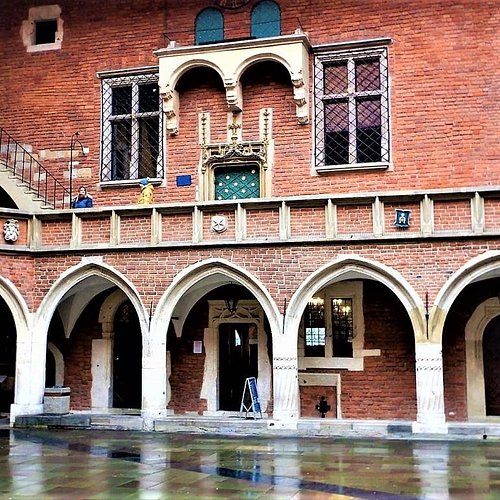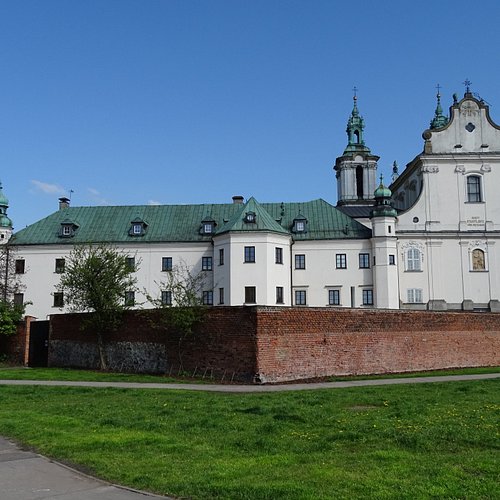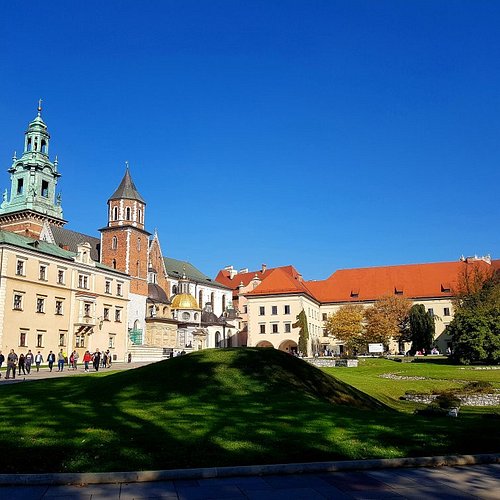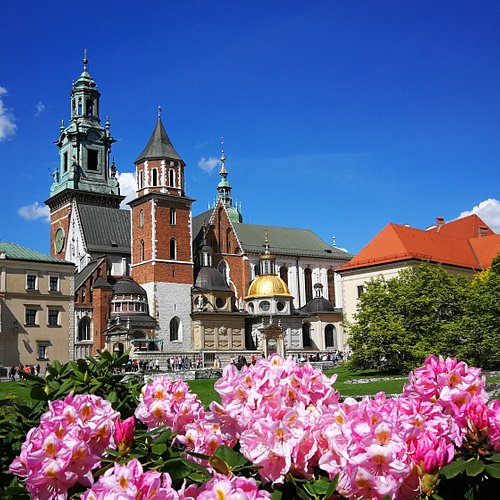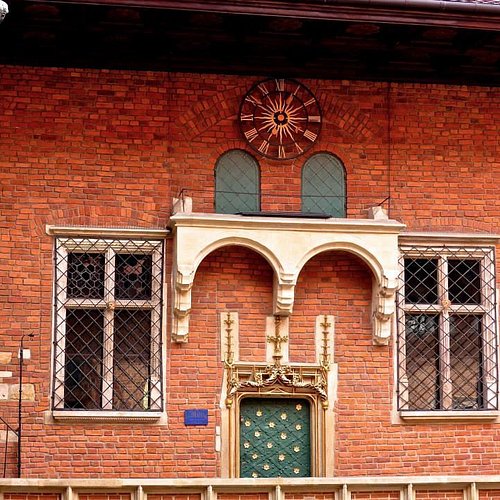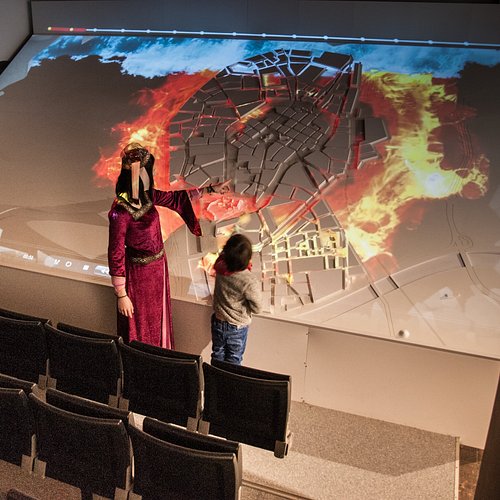10 Historic Sites in Krakow That You Shouldn't Miss
Krakow is one of the most culturally and politically significant cities in Poland. It was the central site of the Nazi General Government during WWII, and there’s still a residual feeling of solemnity here that’s especially apparent during visits to the Plaszow Concentration Camp and the Oskar Schindler Factory. Both the Historic City Centre and the Jewish District are brimming with cafés, shops, and pubs, and the 10-acre Main Market Square is a medieval feast for the senses.
Restaurants in Krakow
1. Muzeum Uniwersytetu Jagiellonskiego Collegium Maius
Overall Ratings
4.5 based on 1,088 reviews
First founded in 1364, this integral part of Krakow life has many distinguished alumni including distinguished Polish intellectuals, political leaders and well-known international figures like Nicolaus Copernicus and Pope John Paul II. The Collegium Maius is the oldest surviving building of the university.
2. Church on the Rock (Kosciol na Skalce)
Overall Ratings
4.5 based on 108 reviews
Located on the River Vistula, this ancient pilgrimage site was the center of the Cult of St. Stanislaw, an 11th-century bishop and martyr.
3. Wawel Royal Castle
Overall Ratings
4.5 based on 10,412 reviews
Serving as a royal residence and the site where the country's rulers governed Poland for five centuries (1038-1596), this castle is a symbol of the independent Polish state and today contains a priceless collection of 16th-century Flemish tapestries, considered to be one of the largest in the world.
Reviewed By travelessential - Melbourne, Australia
Definitely worth your visit, amazing detail and architecture especially see Lost Wawel and the armoury. Strangely you have to buy tickets for each section you are wanting to see and the queues are long so definitely use online if you can. Also strangely the cathedral is another ticket and another office. They should really just sell one ticket covers all. It would be a lot quicker!
4. Wawel Cathedral
Overall Ratings
4.5 based on 5,816 reviews
National shrine known for its superb religious art including the giant bell of Zygmunt of 1520, one of the world's largest, and the burial place of many Polish kings and their families, national heroes and numerous bishops.
Reviewed By MarkH706 - Paphos, Cyprus
Great and very intresting trip to Wawel and the Royal Cathedral on Wawel Hill Visiting the Royal Tombs to see the last resting place of Polish monarchs and national heroes also visiting the Pope John Paul II Cathedral Museum. Worth the visit but the ticket office on our visit was hectic.
5. Ulica Florianska
6. Jagiellonian University - Collegium Juridicum
Overall Ratings
4.5 based on 69 reviews
Reviewed By knarikmelkonian - Yerevan, Armenia
The University building is in the Old town Krakow and has an interesting architecture. You can also enjoy walking in the uni garden. The tours inside the University Museum are only guided, provided in many languages. So if you are planning to visit the museum you should book a tour in the tourist office.
7. Church of St. Peter and St. Paul
Overall Ratings
4.5 based on 1,063 reviews
Reviewed By fozjon - Patna, India
this may well be the most beautiful church building in Krakow. Not only is the front of the building beautiful, but it has statues of the 12 apostles out front of it. There's much to see.
8. Muzeum Krakowa, oddzial Fabryka Emalia Oskara Schindlera
Overall Ratings
4.5 based on 16,994 reviews
Exhibition Kraków under Nazi Occupation 1939–1945 is located in the former administrative building of Oskar Schindler’s Enamel Factory at 4 Lipowa Street. The exhibition is primarily a story about Kraków and its inhabitants, both Polish and Jewish, during World War Two. It is also a story about Nazi Germans – the occupiers who arrived here on 6 September 1939, brutally disrupting Kraków’s centuries-long history of Polish-Jewish relations. Due to high popularity of the museum, pre-booking is required.
Reviewed By annarX6201AV
Unique take on model history showed through the prism of everyday life and from perspective of ordinary people, at the actual factory building. Highly recommend
9. Krakow for Beginners (Krakow in 15 minutes)
Overall Ratings
4.5 based on 135 reviews
How to start visiting Krakow? Find the best "Introduction to Krakow", 15 minutes 3d Mapping movie played on the model of the city. Design your trip, verify your plans, discover great stories behind. You will get to find out historical facts about Kraków in an entertaining and informative way. Shows in different languages (Eng/Ger/It/Fr/Es/Rus/Pol) .
10. Muzeum Krakowa - Barbakan
Overall Ratings
4.0 based on 1,024 reviews
The Barbican was built at the end of 15th century (1498-1499) and it was the strongest element of the expanded fortifications in Krakow. Barbican was a fortress almost impossible to conquer. Its first test came in 1587 in the battle for the Polish Crown. Krakow's city walls were surrounded by the army of archduke Maksymilian--the royal line of Habsburg. The Attack of his troops was repelled. The pretendant to the throne was forced to leave the city. Another important trial took place during the siege by the Swedish Army-(commonly referred to as "Potop Szwedzki" in polish history) in 1655. Opening hours: summer season (April – October) Monday - Sunday 10.30 am - 6.00 pm closed on every second Monday of the month winter season (November – March) closed There is a one shared ticked for both the Barbican and the Defence Walls. The tickets can be purchased in the branch ticket office on in the Visitor Centre, Sukiennice, Rynek Głowny 1.

